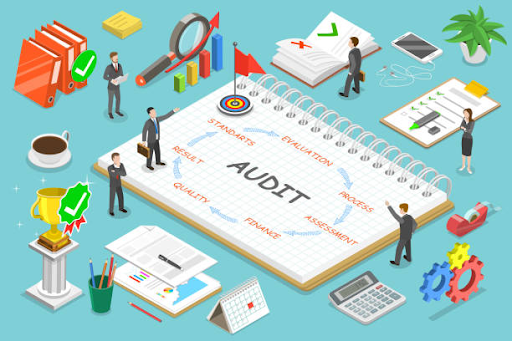
The Public Company Accounting Oversight Board (PCAOB) regularly releases Staff Inspection Briefs to provide a comprehensive overview of inspection results related to issuer audits. The insights derived from these inspections are crucial for auditors, audit committees, investors, and preparers. This article synthesizes key findings from the 2016 inspection cycle, examining over 780 issuer audits and shedding light on critical areas such as risk assessment, internal control over financial reporting (ICFR), auditing accounting estimates, and a spectrum of other topics.
Risk Assessment and Material Misstatement
An effective audit hinges on the meticulous assessment and response to risks of material misstatement. The PCAOB's 2016 inspection identified significant areas that require attention:
Proper Judgments on Risk:
An essential component of the audit process is the application of sound judgments about risk. It necessitates performing audit procedures aligned with the assessed risk. The report emphasized the importance of substantive procedures, including tests of details, specifically tailored to address significant risks, including fraud risks.
Addressing Material Misstatement Risks:
Limited tests of details, such as those confined to revenue recorded between confirming accounts receivable at an interim date and rolling the balance forward to year-end, were deemed inadequate. The report underscored the necessity of addressing the risk of material misstatement in revenues recognized in earlier periods.
Disclosures Accuracy and Completeness:
Evaluating the risk associated with the accuracy and completeness of disclosures was highlighted as an area where improvements are needed. Identifying, assessing, and addressing the risk of disclosure misstatement should be integral to the audit plan.
Auditing Internal Control Over Financial Reporting (ICFR)
The PCAOB's inspection identified common deficiencies in the testing of the design and operating effectiveness of selected controls, with a specific focus on controls involving a review element. Key observations include:
Insufficient Testing of Controls:
Controls related to management’s cash-flow forecasts or assumptions used in estimates often lacked adequate testing. Controls with review elements require thorough examination to ensure their effectiveness.
Focus on Control Over Estimates:
Inadequate testing of controls related to management's cash-flow forecasts and assumptions used in estimates was a recurring issue. The importance of comprehensive testing in these areas was emphasized.
Auditing Accounting Estimates and Fair Value Measurements
The PCAOB's examination of accounting estimates, including fair value measurements, revealed common deficiencies:
Impairment of Long-Lived Assets:
Deficiencies were noted in evaluating impairment of long-lived assets, including goodwill. The complexity of models, subjective factors, and management bias contribute to the heightened risk associated with accounting estimates.
Risk in Various Accounting Areas:
The report highlighted risk areas such as revenue-related reserves, inventory reserves, financial instruments, and the allowance for loan losses. These areas involve subjective judgments and complex models, making them inherently higher risk.
Comprehensive Coverage of Key Topics
The Staff Inspection Brief covered an array of critical topics that impact the audit landscape. Some notable areas include:
Multinational Audits:
The challenges and nuances of audits spanning multiple jurisdictions were addressed, emphasizing the need for a nuanced approach in these complex scenarios.
Business Combinations:
The report delved into the intricacies of auditing business combinations, emphasizing the importance of thorough examination and due diligence.
Investment Portfolios:
The complexities surrounding the audit of investment portfolios were discussed, shedding light on potential pitfalls and areas requiring meticulous attention.
Going Concern:
The evaluation of an entity's ability to continue as a going concern was identified as a critical area, requiring robust assessments and considerations.
Related-Party Transactions:
The intricacies of auditing related-party transactions were emphasized, underlining the need for a meticulous approach to ensure accuracy and transparency.
Cybersecurity:
The increasing significance of cybersecurity in the audit landscape was acknowledged, emphasizing the role of auditors in assessing and addressing related risks.
Auditor Independence:
The importance of maintaining auditor independence was highlighted, underscoring the need for a robust framework to avoid conflicts of interest.
Audit Committee Communications:
Effective communication with audit committees was identified as a key element in ensuring the success and integrity of the audit process.
Firm’s System of Quality Control:
The report addressed the overarching importance of a firm's system of quality control, emphasizing its role in upholding the standards and integrity of the audit profession.
Navigating the Evolving Audit Landscape
The insights gleaned from the PCAOB's Staff Inspection Brief on audits of issuers provide a roadmap for auditors, audit committees, investors, and preparers. The identified deficiencies underscore the need for continuous improvement and vigilance in critical areas such as risk assessment, internal control, and auditing complex accounting estimates.
Note: The information presented in this article is based on the status of PCAOB regulations as of the knowledge cutoff date in January 2023. Subsequent updates or changes may not be reflected.
